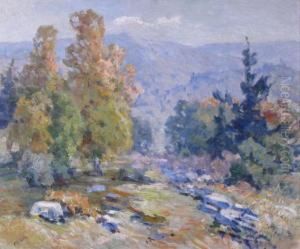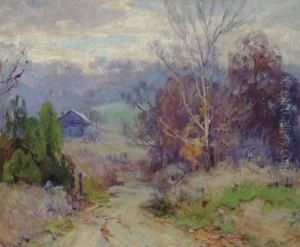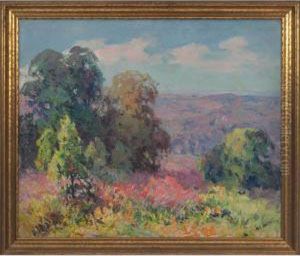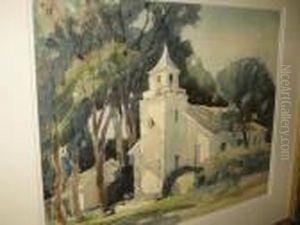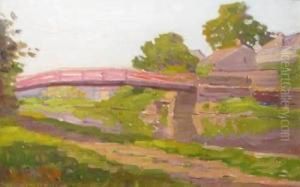John William, Will Vawter Paintings
John William Vawter, born in Boone County, West Virginia in 1871, was an American artist renowned for his illustrations and landscape paintings. Will, as he was commonly known, moved with his family to Greenfield, Indiana, at a young age, where he later became closely associated with the poet James Whitcomb Riley. Vawter's illustrations for Riley's poems helped to visualize the charm of rural and small-town life in America, making both the poet's work and Vawter's art beloved across the country.
Vawter's artistic journey began in earnest when he apprenticed with a local sign painter in Greenfield. This experience, though seemingly modest, introduced him to the practical aspects of art and design, setting the foundation for his future career. His talent soon caught the attention of Riley, who was then looking for an illustrator that could capture the essence of his poetry. Their collaboration proved to be a pivotal moment in Vawter's career, leading to widespread recognition.
Beyond his work with Riley, Vawter developed a substantial body of work that included landscape paintings and other illustrations. He was particularly admired for his ability to capture the light and atmosphere of the Indiana countryside, contributing to the American landscape tradition in a manner that was both personal and evocative. His style, characterized by a gentle realism and a keen eye for detail, resonated with the aesthetic sensibilities of the early 20th century.
Vawter's contributions to American art were recognized in his lifetime, and he was an active member of the art community, particularly in Indiana. He was part of the Brown County Art Colony, a group of artists who were drawn to the picturesque scenery and artistic camaraderie found in the hills of southern Indiana. This period of his life was marked by both artistic productivity and community engagement, as he participated in exhibitions and shared his knowledge with budding artists.
John William Vawter passed away in 1941, leaving behind a legacy that has continued to be appreciated by both art historians and the public. His work remains an important part of American art history, capturing the spirit of an era and the beauty of the American landscape. His illustrations for Riley's poetry continue to be celebrated for their warmth and charm, while his paintings are admired for their tranquil beauty and technical skill.

